Top 5 Uncanny Flowers: The Creepy Antirrhinum Majus and Other Flowers That Look Like Skulls
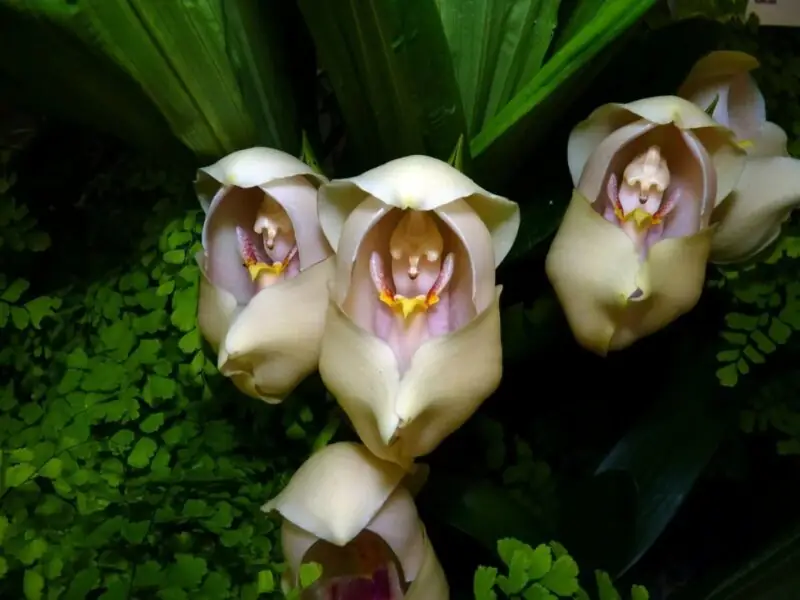
If you are interested in unique and peculiar flowers, you’ve landed in the right spot. We’re about to embark on a journey through some of the planet’s most intriguing and unusual flora – specifically, flowers that look like skulls! These skull-resembling flowers are gaining popularity due to their spooky appearance and macabre allure. Be it for Halloween decorations or just a distinct addition to your garden. These skull-like blooms are bound to draw attention thanks to their clever deception. Plant these to turn your garden into a monster orchid paradise.
Author’s Highlight: Snapdragon Flower
A particular type of flower that bears a striking resemblance to a skull is the Antirrhinum Majus, commonly referred to as the “Skull Snapdragon.” Its name stems from its distinct shape. It appears much like an open mouth with bone-like jaws at each end. This enthralling plant has been turning heads worldwide. Their appearance becomes similar to human skulls when they die off.
The Skull Snapdragon: Antirrhinum Majus
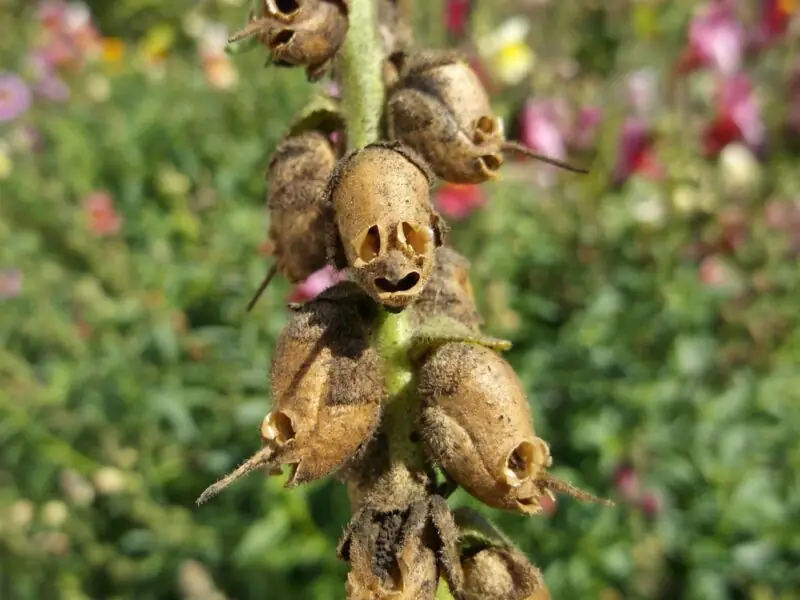
Native to the sun-soaked terrains of Europe and North Africa, including the Mediterranean regions of Morocco, Portugal, Southern France, Turkey, and Syria, the Snapdragon is a remarkable flowering plant. It revels in full sunlight and well-drained soil conditions. Towering up to three feet tall, the Snapdragon belongs to an intriguing family with 25 different species. There’s a flower in every color, from mystical purple to vibrant yellow and delicate pink, each hue accentuating the narrow, snout-shaped petals that give the flower its name – Snapdragons, mirroring the powerful snap of a dragon’s jaws.
However, what truly sets Snapdragons apart is their astounding transformation. As the flowers bloom and eventually dry, they turn into macabre spectacles, resembling miniature skulls left behind. This uncanny metamorphosis from a vibrant flower to skeletal remains fascinates many, making them a popular choice for Halloween decorations. Despite their eerie transformation, Snapdragons continue to bloom year after year, symbolizing resilience and life’s enduring cycle.
The Darth Vader Orchid
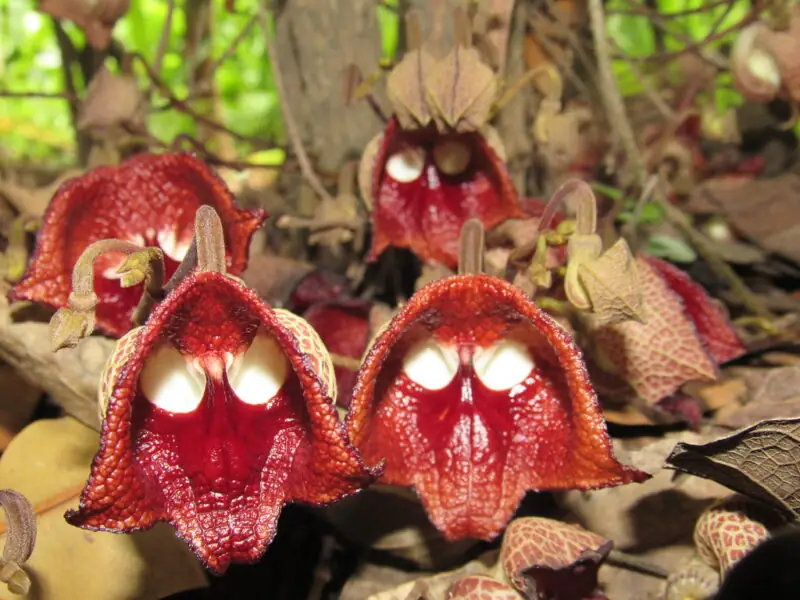
Native to Mexico and Central America, the “Darth Vader” orchid is a captivating flower species, drawing attention with its unique shape and ominous resemblance to a skull. Its name stems from its striking appearance, and it’s easy to see why. It looks like the mask of Darth Vader from Star Wars. This unusual bloom thrives in well-drained soil and revels under the full blaze of the sun, demonstrating the same resilience and power that characterizes the Snapdragon family, which encompasses 25 varied species.
Its chilling appeal is accentuated by violet petals that encircle an inner part, shaped much like a snout. However, it’s the flower’s frightful, monster-like features that truly set it apart, carving a distinct place for it within the world of botany and culture at large. Furthermore, it’s macabre charm and unique transformation have turned it into an Instagram sensation, much like Snapdragons, enchanting followers with every post.
The Swaddled Babies Orchid
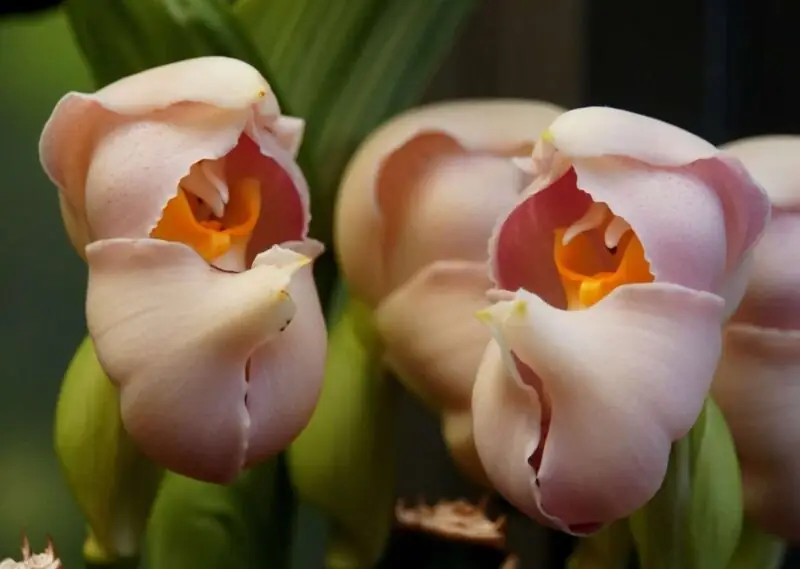
Venturing further into our list of floral oddities, we encounter the ‘Swaddled babies’ orchid. This member of the orchid family is scientifically known as Anguloa uniflora. Its large, showy, white-yellowish blossom looks like a tightly wrapped newborn. Over time, it gradually opens to reveal more details hidden under its peculiar pod shape.
This miniature flowering plant gives the impression of being swaddled, much like infants kept warm during cold winter months. Hence, it’s earned its nickname, the ‘swaddle baby.’
But what sets it apart? When squeezed, their pods release a sweet scent similar to vanilla extract. This intriguing attribute adds a layer of mystery to these delicate-looking blooms.
The Ghost Plant (Monotropa uniflora)
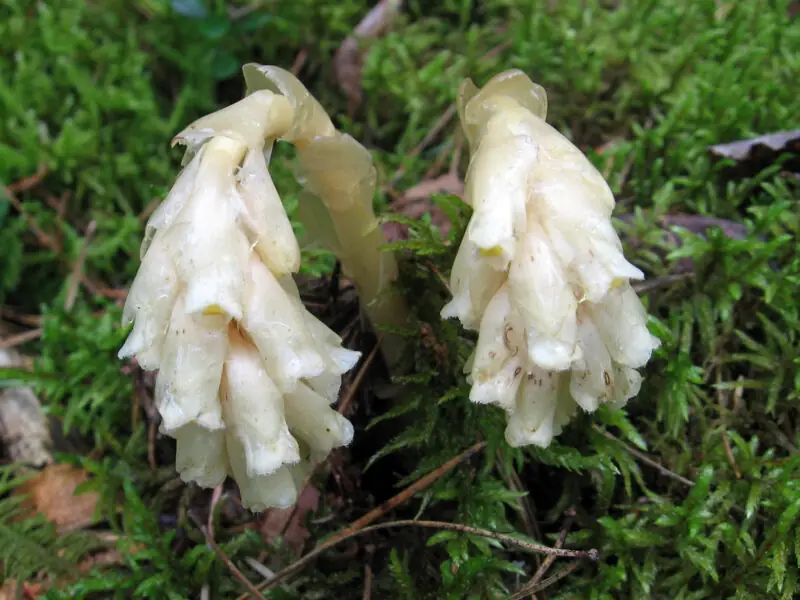
Next on our list is the ghost plant. It’s also known as an Indian pipe or corpse plant. This beautiful flower belongs to the heath family. Unlike most plants that use photosynthesis to produce energy from sunlight, this species relies on a parasitic relationship with fungi in the soil. This results in its lack of chlorophyll, making it appear almost translucent white, like a ghost.
The ghost plant’s stems can grow up to 10 inches tall. At their tops, they bear one or two bell-shaped flowers. These delicate blooms have four petals each, curling backward to reveal yellowish-green stamens inside. They give off a sweet scent, similar to vanilla or almond, but only bloom for about two weeks in late summer. This is probably another reason why this flower gets its name from ghosts; both are elusive.
The Black Bat Flower (Tacca chantrieri)
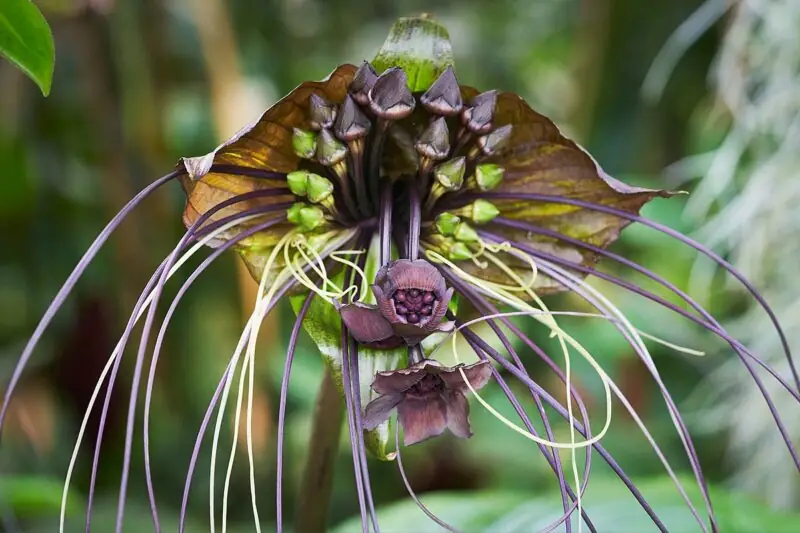
This black bat flower might be what you need for your garden. The large, dark purple-black flower looks like a bat in flight. This flower is sure to draw attention.
The black bat flower is native to Southeast Asia and parts of Australia. It requires warm temperatures and high humidity to thrive. This flower prefers partial shade or filtered light over direct sunlight. In terms of soil, it prefers well-draining soil, rich in organic matter.
Common Questions About Flowers That Look Like Skulls
Flowers that resemble skulls have fascinated people for centuries due to their unique and eerie appearance. They’ve gained popularity, especially around Halloween, as macabre decorations. But beyond that, they’re also intriguing plants that you might want to plant in your garden or home. Plus, if a flower looks like a skull, it will catch everyone’s eye.
Yes, you can! Several species of these plants thrive indoors, provided they get enough sunlight and are planted in well-drained soil. Skull Orchid and Swaddled Babies Orchid are popular choices for indoor growing. Plus, snapdragons make for great decorations.
While most species of these plants pose no harm, some might be toxic if ingested by humans or pets. It’s always important to research each specific type before planting it in your garden or home.
Each species has its unique requirements for optimal growth and blooming. Generally, keeping the plants moist but not overwatered is key. Deadheading or removing spent blooms encourages more flowering throughout the season.
No, only a few varieties among the 25 species of the flower snapdragon resemble human skulls. Their scientific name, Antirrhinum majus, translates to “like a snout.” This description perfectly captures their appearance when you look closely.
Conclusion
Flowers that look like skulls hold an undeniable allure. Whether it’s the ghost plant turning pale as it withers or the Snapdragon’s semblance to a dragon’s head, these plants inject a fascinating, macabre touch to any garden. Not only visually intriguing, but they also serve as conversation starters. So, if you’re inclined to transform your garden into a space of mesmerizing beauty, these skull-resembling plants could be your perfect choice.